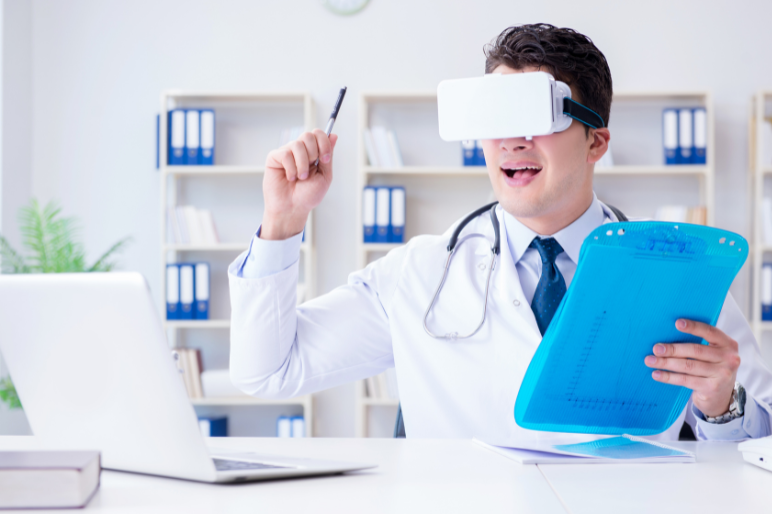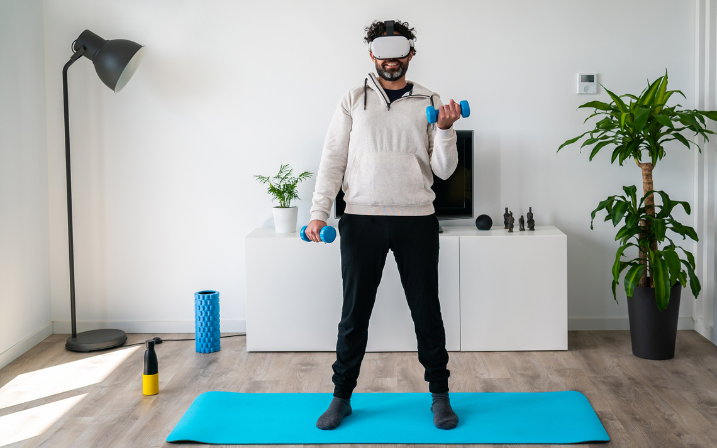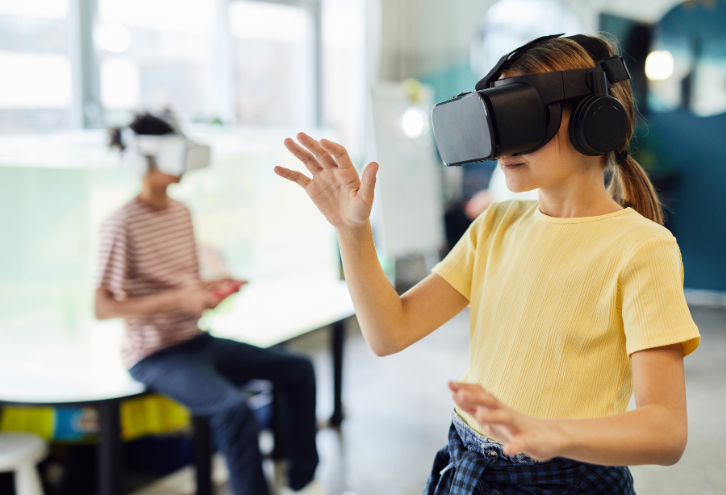
Intro to Virtual Reality in Healthcare
Virtual reality (VR) provides users with a virtual space for receiving care, from physical to mental therapy. This provides patients pain management, and virtual therapy, and can even be used to demonstrate virtual surgeries [1]. However, virtual reality also has biases that make it difficult to utilize efficiently. This can be due to issues with accessibility, digital literacy, and even motion sickness from using the device. Therefore, the healthcare sector has a long way to go before virtual reality is commonly implemented among patients for treatments.

Cybersickness from Virtual Reality
Some people in general avoid virtual reality due to the motion sickness they get when using it. Specifically, cybersickness can result in nausea, headaches, and also dizziness in patients who use VR [2]. Oftentimes, these symptoms are due to the perceived motion from one’s environment but the lack of actual movement. Unfortunately, this can create biases for patients who would benefit from VR but are unable to use it due to motion sickness. For instance, virtual reality care is beneficial to patients who are managing PTSD or even pain. Cybersickness can however reduce a patient’s ability to adhere to their treatment, which can lead to delayed treatment. Furthermore, negative symptoms from VR can not only disrupt treatment but may also require additional interventions. These inventions can result in longer session durations, adjustments to balance out discomfort, and even new methods of treatment.

Additionally, the negative user experience of using VR can cause patients to be more reluctant to use it in the future. Although VR still has a long way to go, it is improving and advancing in the level of immersion it can provide. Therefore, developers must continue developing strategies to provide comfort to users that minimize cybersickness. This can range from optimized frame rates to providing settings that adjust based on a patient’s personal preference. Overall, virtual reality will continue to advance in providing alternative and efficient solutions to patients. Therefore, healthcare professionals should continue to enhance the delivery of VR care so that all patients may safely and feasibly use it.
Accessibility Bias in Virtual Reality
Accessibility bias can result from unequal access to VR-based healthcare services for patients. These patients are often in marginalized or underrepresented groups. For instance, there may be limited VR options for patients with disabilities from mobile impairments, visual/hearing impairments, and cognitive disabilities. This can make it harder to provide VR-related interventions that could benefit patients. Furthermore, this will require developers to come up with different ways that VR can be catered to patients with impairments and disabilities, such as allowing them to adjust the setting or providing specific controllers for them.

Furthermore, the financial barriers of virtual reality can prevent patients from being able to use it. For instance, insurance may not cover the high upfront costs for VR headsets. Additionally, most patients may not even have access to VR interventions from their providers. This can worsen current disparities in care for patients who have limited financial resources. Additionally, technological literacy can make it difficult for patients to access VR. This can range from limited knowledge of navigating VR platforms to difficulty accessing online VR content. Furthermore, older patients may be less inclined to use virtual reality as an option, even though they could benefit from the increased social interaction and pain management. Overall, virtual reality still has a long way to go before it can be implemented widely to treat patients. However, the multitude of healthcare solutions that VR offers make it more important to overcome these biases.
HITS
HITS provides management services and collaborates with clinicians in the development of health informatics. We provide tools that promote safe, timely, patient-centered, and equitable care. Our agency culture and mission facilitate customer and human-centered design. Additionally, we tailor software and project management support products to meet our customer’s needs. HITS also focuses on transforming health care by analyzing integrated medical solutions and evaluating information systems. Our goal is to enhance individual and population health outcomes, improve patient care, and strengthen the clinician-patient relationship.